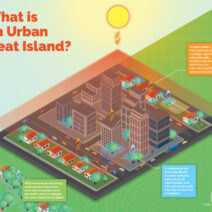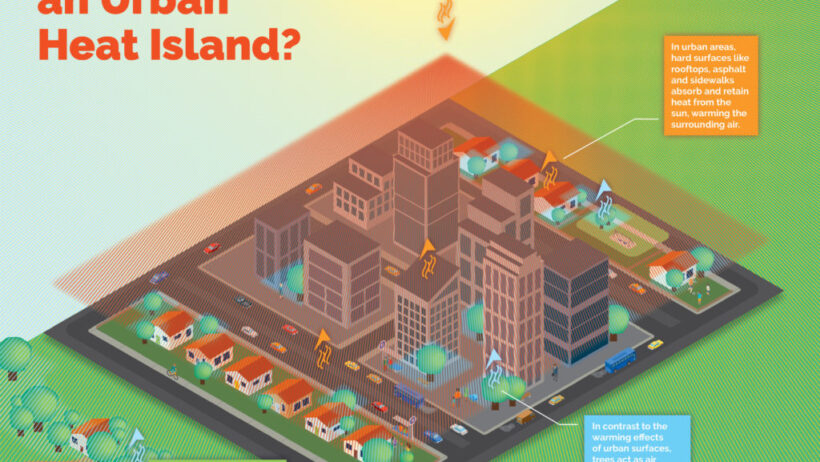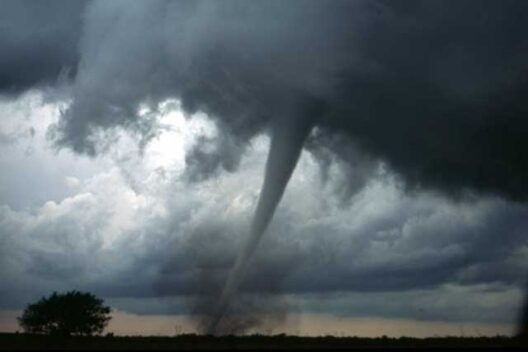Urban Heat Islands (UHIs) refer to metropolitan areas that experience significantly warmer temperatures than their rural surroundings. This phenomenon arises from various anthropogenic factors, including extensive concrete surfaces, diminished vegetation, and increased human activity. As global warming becomes an increasingly pressing issue, the existence and expansion of UHIs are gaining attention due to their potential to exacerbate climate change.
To understand whether Urban Heat Islands can indeed make global warming worse, one must explore several critical dimensions of this phenomenon, including its definition, contributing factors, ecological and health impacts, and possible mitigation strategies.
Definition and Mechanisms of Urban Heat Islands
The UHI effect manifests when urban areas absorb and retain heat more effectively than rural areas. This absorption results from materials commonly used in urban infrastructures, such as asphalt and concrete, which have low albedo—meaning they reflect very little solar energy and instead convert it into heat. Additionally, the density of buildings contributes to heat retention, as they hinder wind flow and impede the natural cooling effect of air movement.
Land use change is another significant factor in the formation of UHIs. As cities grow, natural landscapes are replaced by impervious surfaces that limit the cooling effects of vegetation and soil moisture. The reduction of green spaces contributes to a heat-retaining environment, thereby heightening local temperatures and potentially influencing the regional climate.
Contributing Factors to UHI Formation
Various elements contribute to the intensity of the UHI effect. Industrial activities, vehicular emissions, and energy consumption are major contributors to urban warmth. In densely populated areas, the increased demand for energy leads to higher emissions of greenhouse gases, perpetuating the cycle of warming. Furthermore, the phenomenon is closely tied to the time of day; urban areas often display elevated temperatures during the night as heat is released slowly from buildings. This nocturnal heat retention can disrupt local ecosystems and wildlife behaviors.
Socioeconomic factors also play a role in the severity of UHIs. Low-income neighborhoods, often deprived of green spaces and resources, can be disproportionately affected by heat, exacerbating social inequalities. Lack of access to air conditioning and healthcare resources makes residents in these areas more vulnerable to heat-related illnesses, underlining the intersectionality of urban heat dynamics and social justice.
The Impacts of Urban Heat Islands
The ramifications of UHIs extend far beyond just elevated temperatures. The increased heat can lead to a myriad of ecological consequences, including altered precipitation patterns and increased energy consumption. During periods of extreme heat, energy demands soar as people rely on air conditioning systems. This surge in electricity usage can lead to power outages, particularly in urban areas with aging infrastructure, which not only disrupts daily life but also constitutes an economic burden. Furthermore, power generation is often reliant on fossil fuels, leading to a vicious cycle where increased energy demand contributes to further greenhouse gas emissions.
Human health is another critical concern linked with UHIs. Prolonged exposure to elevated temperatures can cause heat-related illnesses, such as heat exhaustion and heat strokes. Vulnerable populations, including the elderly and those with pre-existing health conditions, are at heightened risk. Additionally, higher temperatures can exacerbate air pollution levels, leading to respiratory problems and other health complications.
Moreover, ecosystems are not impervious to the influence of UHIs. Altered microhabitats can threaten local flora and fauna, potentially leading to biodiversity loss. Species that cannot adapt to changing temperature regimes may face extinction, undermining the delicate balance of urban ecosystems.
The Interplay Between UHIs and Global Warming
As global warming continues to progress, the implications of Urban Heat Islands grow increasingly severe. The interconnection between UHIs and climate change creates a feedback loop. Higher temperatures from climate change intensify UHI effects, leading to more energy consumption and higher emissions, which, in turn, accelerates global warming.
Urban areas are projected to face more frequent and extreme heat events as climate change unfolds. This trend will further exacerbate the health risks and environmental challenges posed by UHIs. As such, the urban planning and management of cities must account for these evolving dynamics to mitigate their impact on the environment and human health.
Mitigation Strategies
Addressing the UHI phenomenon is vital in curbing its contributions to global warming. A multi-faceted approach can help alleviate its effects. One potential strategy involves increasing urban greenery. The incorporation of parks, green roofs, and tree canopies can significantly enhance shading and promote evaporative cooling, thereby reducing ambient temperatures. These green spaces can also enrich biodiversity and improve air quality, contributing to healthier urban environments.
Additionally, the adoption of heat-reflective materials for buildings and pavements can diminish heat absorption. Urban planners and architects are increasingly focusing on sustainable design practices that prioritize thermal comfort and energy efficiency. Moreover, enhancing public transportation options can reduce vehicle emissions and contribute to a decrease in urban heat.
Community engagement is equally important. Educating residents about the UHI effect and encouraging individual actions—such as planting trees, conserving energy, and utilizing public transport—can foster a collective response to this pressing issue.
Conclusion
In summary, Urban Heat Islands present a substantial challenge in the context of global warming. By encompassing a plethora of environmental, health, and economic dimensions, UHIs are not merely localized phenomena; they hold broader implications for climate change. Addressing these challenges requires integrated planning, innovative solutions, and community involvement to forge a more sustainable future. The actions taken today will shape the resilience of urban areas in the face of climate challenges, reaffirming the pivotal role of proactive urban management in averting the exacerbation of global warming.






